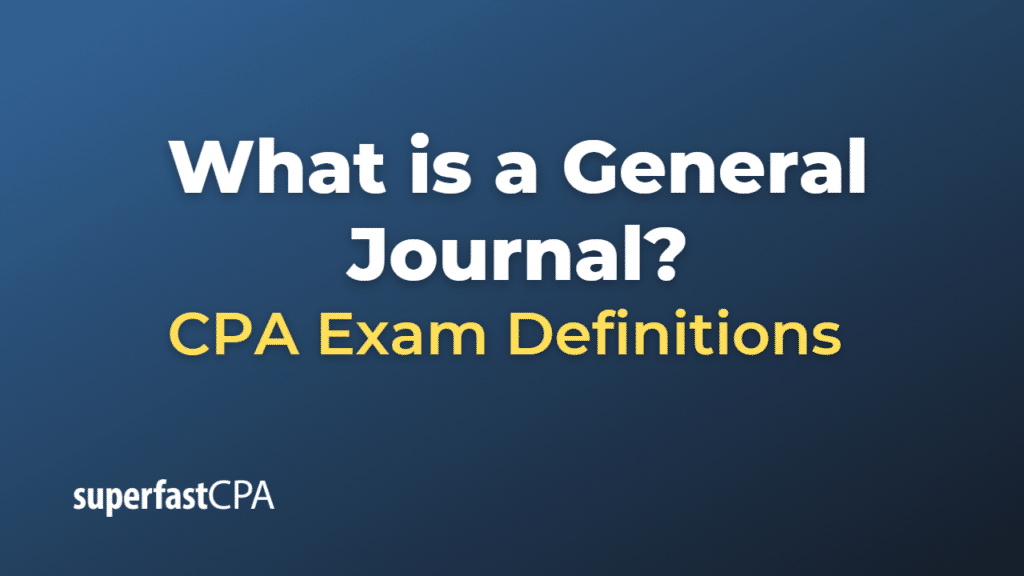General Journal
In accounting, a general journal is a record where all business transactions are initially recorded, using the double-entry accounting method, before they are posted to the ledger accounts. The general journal is often called the book of original entry, as it’s the first place the transactions are recorded.
Each journal entry lists the date of the transaction, the accounts affected, the amounts to be debited and credited (which should be equal to maintain the balance), and a brief description of the transaction.
The structure of a general journal entry is typically as follows:
- Date of the transaction
- Account to be debited and the amount
- Account to be credited and the amount
- A brief description or memo
For example, if a company purchases equipment worth $5,000 with cash, the journal entry would be:
- Date: (The date of the transaction)
- Debit: Equipment $5,000
- Credit: Cash $5,000
- Description: Purchased equipment for cash
It’s important to note that more complex transactions might affect more than two accounts. In these cases, a single journal entry will still include total debits and credits that are equal.
After transactions are recorded in the general journal, they are typically posted to the ledger accounts, which sort transactions by account. This process helps in preparing the trial balance, income statement, and balance sheet. The general journal is an integral part of the accounting cycle and helps ensure that financial statements are accurate and complete.
Example of a General Journal
Let’s consider a few different transactions to illustrate how they might be recorded in the general journal.
- Sale on credit: Let’s say that a business sells goods worth $1,000 to a customer on credit. The journal entry would be:
- Date: (The date of the transaction)
- Debit: Accounts Receivable $1,000
- Credit: Sales $1,000
- Description: Sold goods to customer on credit
- Purchase of supplies with cash: Suppose the business buys office supplies worth $200 with cash. The journal entry would be:
- Date: (The date of the transaction)
- Debit: Office Supplies $200
- Credit: Cash $200
- Description: Purchased office supplies for cash
- Payment of rent: If the business pays rent of $1,500, the journal entry would be:
- Date: (The date of the transaction)
- Debit: Rent Expense $1,500
- Credit: Cash $1,500
- Description: Paid rent for the month
- Depreciation of equipment: Suppose the business records monthly depreciation of $300 for its equipment. The journal entry would be:
- Date: (The date of the transaction)
- Debit: Depreciation Expense $300
- Credit: Accumulated Depreciation – Equipment $300
- Description: Recorded monthly depreciation for equipment
These examples show how a variety of transactions are recorded in the general journal. Remember, in each case, the total amount debited is equal to the total amount credited, following the rules of double-entry bookkeeping. After these entries are made in the general journal, they would typically be posted to the ledger accounts.













